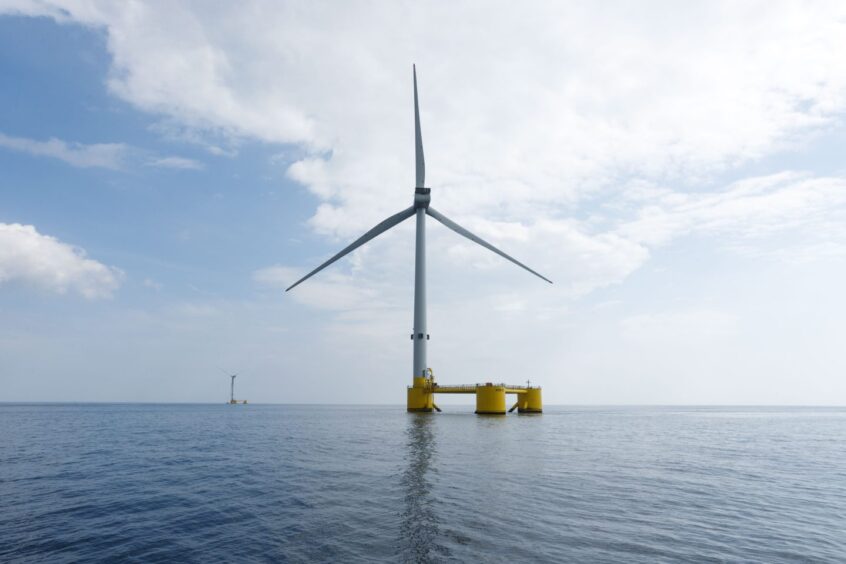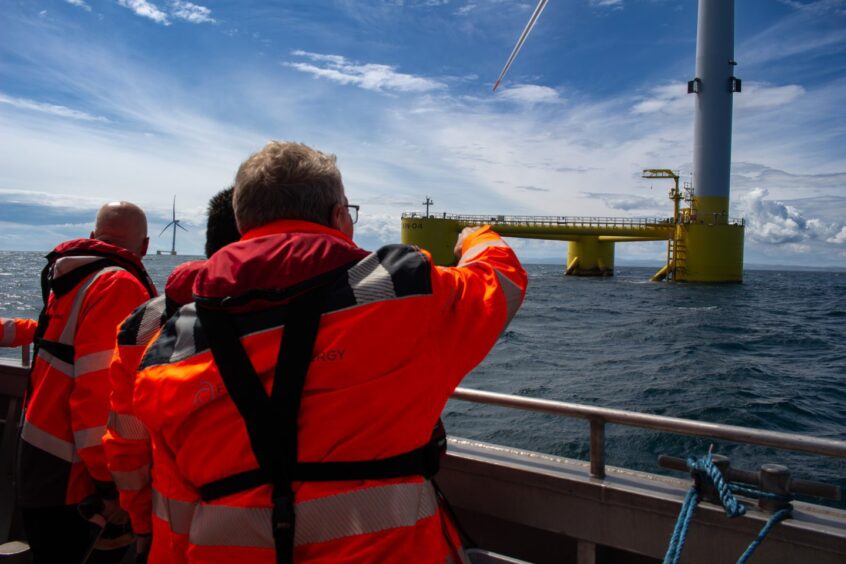
With over 2,600 wind turbines in UK waters and 13.7 of gigawatts of power – a number only surpassed globally by China – the UK offshore wind story is, so far, a success in terms of energy produced. However, the UK has missed a trick in maximising the associated jobs: France and Denmark are leading Europe’s production of offshore wind turbine blades; Spain leads in manufacturing turbine towers; and foundations and electrical substations are increasingly produced in Asia. Floating wind technology now offers the UK a new chance to drive job creation in offshore wind.
As a relatively new technology, significant parts of the supply chain for floating wind – and therefore the location of these jobs – are still to be established. While the turbine blades and towers are the same as with fixed turbines, the floating substructures, cables and moorings are different. These therefore come with new manufacturing and processing roles that are up for taking. In the upcoming decades, it is predicted that 20,000 floating sub-structures will be needed globally, offering suppliers a huge potential new market with long-term growth.
Close to 30,000 people could be working in the UK floating wind industry by 2050 and at the centre of this potential sits the current oil and gas workforce. With 90% of employees in the UK oil and gas industry having the skills to transition to offshore wind, there is a skillset ready and waiting for floating wind. However, the first large floating wind projects globally will determine the supply chain structure, and the suppliers that win these contracts will create the track record required to win future work.
The suppliers and countries that get the first-mover advantage for job creation in this new industry will be determined this year. Several UK pole position projects will soon be ready to enter the construction phase, and seabed area has already been awarded to 24 gigawatts worth of floating wind projects in the region. Although the UK’s potential projects are more mature than those in competing markets, other countries are close behind. The global projects pipeline increased by a third from 2022 to 2023.
If the UK succeeds in pushing its frontrunner floating projects into the construction phase, developers will play a critical role in supply chain development. Their selection of suppliers will sow the seeds that this burgeoning industry will grow from. Moreover, in floating wind suppliers need to work more collaboratively from an early stage in the project due to the higher complexities in design interfaces between different components such as cables, wind turbines, sub-structures and mooring lines, compared to fixed-bottom wind. Developers play a crucial role in connecting all these suppliers, working in new, collaborative models to take floating technology to scale.
Garnering investment in infrastructure, skills and manufacturing with pilot scale projects in any industry is a challenge, and so the importance of delivering commercial-scale floating wind developments to stimulate investment cannot be understated. With the UK’s fantastic wind resource and cutting-edge technology, the UK has strong potential to make the most of this opportunity, now.
Europe’s first commercial-scale floating wind project will be Green Volt, off the coast of Scotland in the Outer Moray Firth, which is being developed under the Crown Estate’s Innovation and Targeted Oil and Gas (INTOG) leasing round by developers Flotation Energy and Vårgrønn. The project will electrify oil and gas platforms while delivering renewable energy to the UK grid.
At 560 MW, Green Volt serves as a stepping stone for suppliers between the small floating installations now operating and the much larger floating projects further down the project pipeline. Green Volt is committed to including local supply chain criteria in the scoring when it selects suppliers and is adopting a collaborative supply chain model required to advance floating wind technology.
If the UK fails to be first on floating wind, projects may have to rely on imported components, because the supply chain expertise will have developed elsewhere. While this approach might tick the box for energy security and emission cuts, it would fail to generate the employment needed to retain public buy-in for the energy transition and would leave the UK behind in terms of skills and development. And, once we reach 2030 and beyond, ready to build out full-scale under the ScotWind leasing round, the risk will be competition with other floating wind projects – potentially in the face of limited supply chain capacity – forcing developers to select international suppliers.
2024 is set to be a pivotal year for this nascent industry. Floating wind is primed and ready to deliver jobs and renewable energy for decades to come, but only if industry and authorities collectively step up this year.
Developers have created execution-ready projects in the UK. Now it is up
to government and authorities to ensure the necessary conditions are in place for industry to invest in the pioneering technology, and local suppliers must prepare to grasp the opportunities that are uniquely available at this moment in a new industrial history. Learn more about Vårgrønn at www.vargronn.com/sustainability.
Recommended for you

 © Supplied by Flotation Energy
© Supplied by Flotation Energy